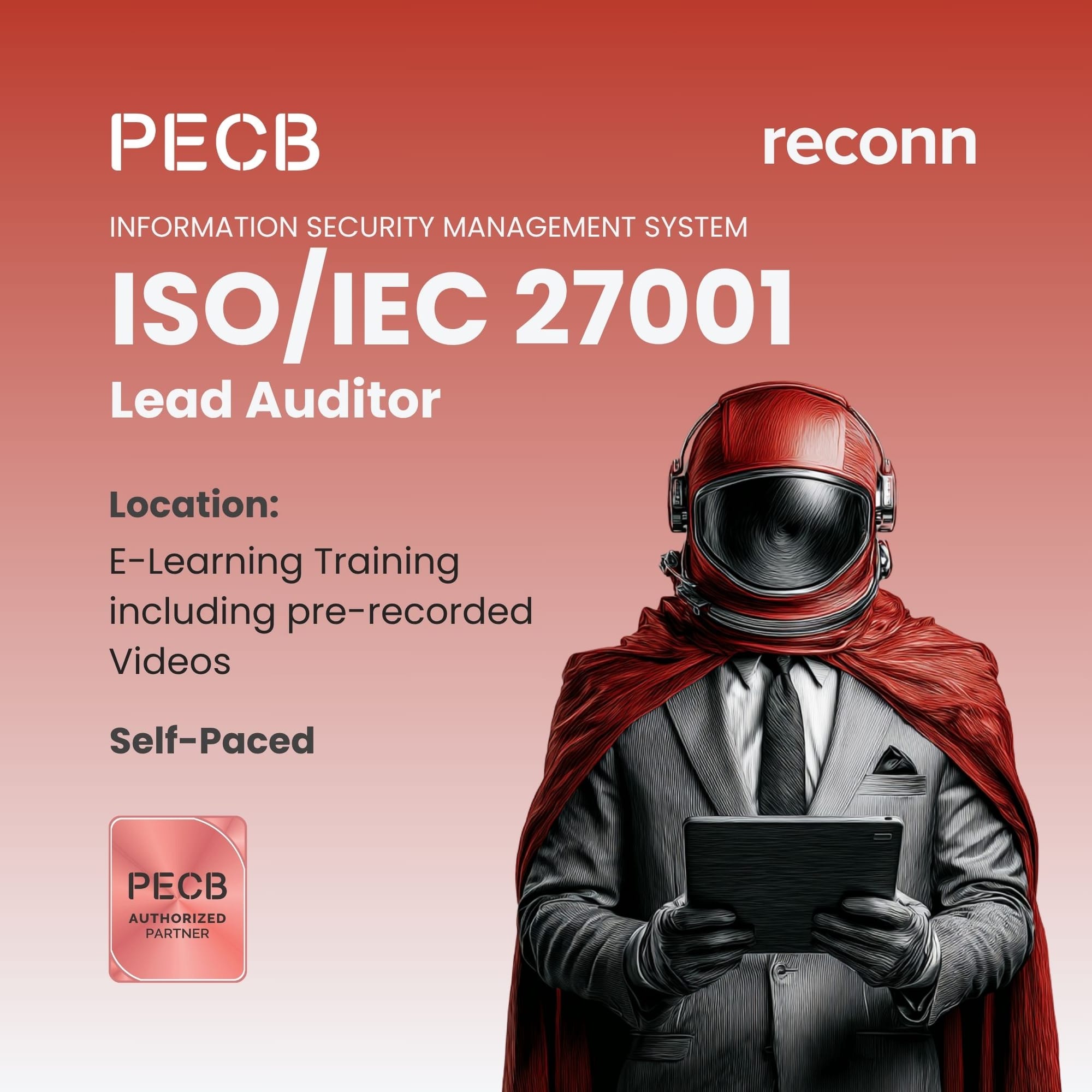ISO/IEC 27001:2022 Gap Analysis: The Ultimate Field Guide
A complete field guide to conducting ISO/IEC 27001:2022 gap analysis. Covers clauses, Annex A, real-world case studies, and includes a downloadable Excel template.

When organizations decide to embark on the journey toward ISO/IEC 27001:2022 certification, the very first step that determines the outcome is not technology, not documentation, and not the auditor—it’s the gap analysis.
Having led and reviewed dozens of ISO/IEC 27001 projects over the past two decades across sectors like banking, SaaS, healthcare, defense, and government, I’ve noticed a clear pattern: the organizations that invested time and resources in a thorough, evidence-driven gap analysis consistently achieved smoother implementations, avoided costly surprises during Stage 1 and Stage 2 audits, and reached certification faster.
Those that skipped or rushed this step? They often ran into budget overruns, failed audits, or “paper ISMS” systems that looked good on documents but fell apart when tested.
A gap analysis is reconnaissance. Just as a military mission begins with surveying terrain, an ISO/IEC 27001:2022 project begins with understanding where you stand, where the vulnerabilities are, and how to allocate your resources wisely. It is the foundation for:
- Identifying missing or weak policies
- Highlighting unimplemented Annex A controls
- Prioritizing remediation actions based on risk and business impact
- Building management confidence in the ISMS journey
Let’s be clear: gap analysis is not just a compliance checklist. It’s a strategic diagnostic tool that helps you make informed decisions. For example:
- A Fintech in Riyadh discovered during its gap analysis that its encryption controls were strong but its supplier security management was nonexistent—a risk that could have derailed certification.
- A SaaS company in Dubai learned that although its cloud infrastructure was technically secure, it had no formal information security policy—a fundamental compliance gap.
These insights don’t come from assumptions; they come from conducting a structured, repeatable, and well-documented gap analysis.
At reconn, we don’t just conduct these analyses—we also teach the methodology in our live online ISO/IEC 27001:2022 Lead Implementer and ISO/IEC 27001:2022 Lead Auditor training courses. Our trainees work through real-world gap analysis scenarios, scoring models, and remediation planning so that they can perform this task confidently in their own organizations.
This guide will walk you step by step through the field-proven methodology of gap analysis, supported by industry examples, a downloadable Excel template, and practical tips drawn from real audits.
Key Takeaways
Before we dive into the detailed field guide, here are the core insights you should carry with you about conducting an ISO/IEC 27001:2022 gap analysis. Think of this as your “executive summary” — a quick reference to why this process matters and what you’ll gain from doing it properly.
- Gap Analysis = Reconnaissance for ISO/IEC 27001:2022
- Just like reconnaissance in a military mission, the gap analysis tells you what terrain you’re crossing.
- It identifies what’s in place, what’s missing, and what needs to be strengthened to align with ISO/IEC 27001:2022 requirements.
- It’s About Evidence, Not Assumptions
- Saying “we have access control” means nothing unless you can show logs, policies, and monitoring reports.
- Evidence collection is a critical part of any gap analysis, and auditors will always check documentation over verbal assurances.
- Both Clauses and Annex A Matter
- ISO/IEC 27001:2022 requires compliance with both Clauses 4–10 (management system framework) and Annex A controls (security practices).
- Many organizations focus too much on Annex A while ignoring leadership commitment, risk assessment methodology, or continual improvement.
- Prioritization Saves Time and Money
- Not all gaps are equal. Missing a supplier risk management process can be riskier than not having a formal clean desk policy.
- Use risk-based prioritization (likelihood × impact × asset value) to focus resources where they matter most.
- Gap Analysis Is Ongoing, Not One-Time
- The best organizations repeat their gap analysis annually or after major changes (new mergers, cloud migrations, new regulations).
- This keeps the ISMS alive and aligned with real-world risks.
- Training Builds Confidence
- Conducting gap analysis is a skill. That’s why we cover it extensively in our ISO 27001 Lead Implementer and Lead Auditor courses — not just theory, but practical scoring, reporting, and remediation planning.

ISO/IEC 27001 Lead Auditor Certification
100% Online ISO/IEC 27001 Lead Auditor Certification program. Choose between self-study or elearning delivery option. Includes official courseware from PECB and 2x Examination attempts.
What is an ISO/IEC 27001:2022 Gap Analysis?
A gap analysis in the context of ISO/IEC 27001:2022 is a structured assessment that compares your organization’s current state of information security with the requirements outlined in the ISO/IEC 27001:2022 standard.
In simple terms: it tells you where you are now versus where you need to be.
Core Purpose
- Establish a baseline: Identify existing controls, policies, and processes.
- Spot gaps: Highlight what’s missing, incomplete, or not properly documented.
- Provide a roadmap: Recommend actions that bridge the difference between your current ISMS and certification readiness.
Without this, your ISMS project risks drifting in the dark — spending money on tools you don’t need, ignoring weaknesses that matter, or failing audits because fundamental requirements were overlooked.
Gap Analysis vs. Risk Assessment
This is where many organizations get confused. Both activities are essential, but they serve different purposes:
- Gap Analysis = Compliance comparison.
- Focus: How well your current practices align with the ISO 27001 clauses and Annex A controls.
- Outcome: A list of non-conformities, partial implementations, and missing evidence.
- Risk Assessment = Security evaluation.
- Focus: Identifying, analyzing, and treating risks to information assets.
- Outcome: A prioritized risk register and treatment plan.
Example:
- Gap analysis may reveal that you lack a documented incident response plan (Clause 6.1.3).
- Risk assessment then quantifies the impact: “If an incident occurs without a response plan, downtime could cost $500k per day.”
Together, they ensure your ISMS is both compliant and risk-resilient.
Why Gap Analysis More Than a Checklist
Many first-time ISO/IEC 27001:2022 projects treat gap analysis like a quick checklist. That’s a mistake. A mature gap analysis digs deeper into:
- Documentation vs. practice – Do policies actually guide daily behavior?
- Evidence vs. assumptions – Can you prove compliance with logs, audits, or metrics?
- Alignment with business risks – Are gaps prioritized based on real impact?
Gap Analysis Field Example
During a project with a healthcare provider in the middle east, the gap analysis showed strong technical safeguards (encryption, MFA) but no formal risk assessment methodology. On paper, they looked secure. In practice, they couldn’t prove risk-based decision-making — a likely major non-conformity.
Identifying this upfront allowed them to design a methodology before audit, saving face with regulators and patients alike.
Why Conduct a Gap Analysis?
Conducting an ISO/IEC 27001:2022 gap analysis is not about ticking a compliance box — it’s about building a realistic, risk-informed roadmap for certification and long-term resilience. Organizations that take it seriously avoid wasted costs, reduce project delays, and show auditors they are prepared. Those that skip it often discover gaps too late, when remediation is costlier and time is short.
1. Build a Clear Picture of Your Current Security Posture
Executives often assume “we’re already secure” because technologies like firewalls, encryption, or MFA are in place. But ISO/IEC 27001:2022 is more than technical controls — it demands policies, leadership commitment, risk management, and continual improvement processes.
Example – SaaS Startup (Dubai):
A SaaS provider had hardened AWS cloud configurations and DevSecOps pipelines. Their gap analysis revealed they lacked a formal Statement of Applicability (SoA) — a mandatory ISO 27001 deliverable. Without this, their audit readiness would have collapsed despite excellent technical security.
2. Avoid Audit Surprises
ISO audits are unforgiving when it comes to evidence gaps. A gap analysis gives you the chance to spot them months before Stage 1 or Stage 2.
Example – Banking:
A leading bank believed it was ready for certification. The gap analysis discovered no documented supplier evaluation process (Annex A.5.19). This would have been a major non-conformity. Fixing it early saved them reputational damage.
3. Prioritize Based on Risk and Business Impact
Not all gaps are equally critical. Missing a clean desk policy is low risk; missing a tested incident response plan is high risk. A gap analysis lets you:
- Rank gaps by likelihood × impact × asset value.
- Allocate resources strategically.
- Secure management buy-in for high-priority fixes.
4. Strengthen Compliance and Trust
Regulators, customers, and partners want proof that your ISMS is structured and evidence-driven. A well-documented gap analysis shows you’re not just chasing certification for a badge — you’re committed to systematic risk management.
Example – Healthcare:
A hospital under HIPAA and local DoH requirements used the gap analysis to align ISO/IEC 27001:2022 with existing regulations. The result: a single harmonized compliance program, reducing audit fatigue and winning patient trust.
5. Save Time and Money
A rushed project leads to over-engineering — buying tools you don’t need or writing policies that add no value. A gap analysis avoids these mistakes by clarifying exactly what’s missing and what can be leveraged.

PECB Catalogue
Explore PECB’s globally recognized course catalogue featuring certifications in AI, cybersecurity, ISO standards, governance, risk, and compliance—designed for professionals seeking expertise and career advancement.
Step-by-Step Field Guide to ISO 27001 Gap Analysis
Step 1: Define the Scope of the ISMS
The most common failure in ISO/IEC 27001:2002 projects begins here: defining the wrong scope. An ISMS scope that is too broad overwhelms teams and budgets. Too narrow, and you leave critical assets unprotected.
How to do it:
- Identify business units, processes, and systems relevant to information security.
- Decide whether to include the entire enterprise or just specific divisions (e.g., IT, digital channels).
- Map dependencies — cloud providers, suppliers, outsourced IT.
- Document inclusions and exclusions clearly in your scope statement.
Real-world example – Financial Entity:
A Financial Entity initially wanted to certify its entire operation. The gap analysis showed this would involve hundreds of branches and 5,000+ staff — a logistical nightmare. Instead, they scoped only digital payments, ATMs, and mobile banking systems. This reduced complexity, cost, and audit time. Later, they expanded the ISMS gradually.
Field tip: Auditors will ask: “Is the scope too limited to avoid compliance effort?” Be ready with evidence that your scope covers critical business risks.
Step 2: Understand ISO/IEC 27001:2002 Requirements
Gap analysis compares your existing ISMS with two major parts of the standard:
- Clauses 4–10 – covering ISMS governance (context, leadership, planning, support, operation, performance evaluation, and continual improvement).
- Annex A – 93 controls (ISO 27001:2022) grouped into:
- Organizational
- People
- Physical
- Technological
How to do it:
- Review each clause and Annex A control.
- Identify which are fully implemented, partially implemented, or missing.
- Record findings in your gap analysis Excel tracker.
Real-world example – SaaS Startup:
A fast-growing SaaS provider had strong technical measures — Cloud and on-prem firewalls, MFA, IAM/IAG, SIEM, XDR — but their management commitment (Clause 5.1) was missing. There was no evidence of security objectives in board meetings. The gap analysis highlighted this as a major weakness, since leadership involvement is mandatory for certification.
Step 3: Collect Documentation and Evidence
ISO auditors live by one phrase: “If it isn’t documented, it doesn’t exist.”
What to collect:
- ISMS policy and security policies (access, cryptography, acceptable use).
- Risk assessment and treatment methodology.
- Asset inventory and classification.
- Statement of Applicability (SoA).
- Records of incident handling, internal audits, and management reviews.
How to do it:
- Centralize evidence in a secure repository.
- Tag each document against relevant clauses and Annex A controls.
- Use your Excel template to link controls with documentation.
Real-world example – Healthcare:
A hospital claimed they had strong encryption practices. But during the gap analysis, when asked for documentation, they could only produce an outdated IT policy referencing SHA-1 hashing (deprecated). This gap flagged a critical risk — one that could have caused an audit failure. By remediating early, they upgraded to AES-256 before certification.
Step 4: Assess Current Status
Once evidence is collected, evaluate maturity of implementation. Two popular approaches are:
- Yes/Partial/No model → Simple traffic-light system.
- Maturity scale (1–5):
- 1 = Non-existent
- 2 = Initial/ad hoc
- 3 = Defined/documented
- 4 = Managed and monitored
- 5 = Optimized
How to do it:
- Assign scores for each control.
- Record status in your Excel tracker.
- Use scoring to visualize gaps via charts/heatmaps.
Real-world example – Government Agency:
An IT ministry used the maturity scale. While 70% of controls were at Level 3 (defined/documented), only 20% were at Level 4 (managed/monitored). The gap analysis revealed the ISMS existed mostly on paper, not in practice.
Step 5: Identify Gaps and Risks
This is where gap analysis meets risk management. Each missing or partial control should be mapped to its associated risk.
How to do it:
- Document control reference (e.g., Annex A.5.19 – Supplier security).
- Describe the gap (e.g., “No supplier evaluation process”).
- Assess associated risk (likelihood, impact).
- Recommend corrective action.
Real-world example – IT System Integrator:
Gap: No supplier risk assessments (Annex A.5.19).
Risk: Dependence on subcontractors could lead to classified data leakage.
Corrective Action: Introduce supplier due diligence process, annual audits, and contract clauses.
Step 6: Prioritize Gaps
Not all gaps carry the same weight. A structured prioritization method ensures resources are allocated efficiently.
Methods:
- Qualitative: Rank High/Medium/Low.
- Quantitative: Likelihood (1–5) × Impact (1–5).
- Weighted risk scoring: Likelihood × Impact × Asset Value.
Example comparison:
- Gap: Missing incident response testing.
- Qualitative: High.
- Quantitative: Likelihood (4) × Impact (5) = 20/25.
- Weighted: 4 × 5 × 3 (asset value of core system) = 60/100.
Real-world example – SaaS Provider:
Prioritized incident response testing (High risk) over implementing a clean desk policy (Low risk). This saved effort while strengthening resilience.
Step 7: Build the Action Plan
A gap analysis is useless without remediation planning.
What to include in the plan:
- Gap description
- Corrective action
- Responsible owner
- Target date
- Budget estimate
- Success criteria/KPIs
Real-world example – Retail Group:
Gap: No business continuity testing (Annex A.17).
Action: Run tabletop exercise and full BCP drill.
Owner: Operations Head.
Deadline: 90 days.
KPI: Recovery time objective (RTO) < 4 hours.
Step 8: Validate and Review Progress
Finally, test whether gaps are truly closed before inviting auditors.
How to do it:
- Conduct internal audits against ISO/IEC 27001:2002 clauses.
- Run management reviews.
- Update SoA to reflect new control status.
- Re-run parts of the gap analysis if major changes occurred.
Real-world example – Financial Entity:
A financial Entities internal audit revealed log monitoring was not consistently performed. This was fixed before the Stage 2 audit, preventing a major non-conformity.

ISO/IEC 27001 Lead Auditor Certification
100% Online ISO/IEC 27001 Lead Auditor Certification program. Choose between self-study or elearning delivery option. Includes official courseware from PECB and 2x Examination attempts.
Gap Analysis Excel Template Walkthrough
A gap analysis without structure quickly turns into chaos — dozens of documents, conversations, and findings scattered across teams. That’s why I always recommend using a centralized Excel tracker. It may sound basic, but in practice, Excel (or Google Sheets) remains the most effective, auditable, and universally understood way to record and monitor ISO 27001 readiness.
We’ve created a ready-to-use ISO/IEC 27001:2022 gap analysis template that covers:
- Clauses 4–10 (ISMS framework)
- Annex A controls (all 93 in the 2022 version)
- Columns for current status, evidence, risks, corrective actions, owners, and deadlines
Download coming soon !!
Structure of the Template
The sheet is divided into five core sections:
- Reference – Clause or Annex A control (e.g., Clause 5.1 or A.5.19).
- Current Status – Fully implemented, partially implemented, or missing.
- Gap Description – What’s missing or weak.
- Risk Level – High, Medium, Low (or quantitative score).
- Corrective Action – Recommended steps to close the gap.
- Owner & Deadline – Accountability ensures progress.
- Evidence/Notes – Links to policies, logs, or other proof.
Sample Rows (Filled Example)
| Reference | Status | Gap Description | Risk Level | Corrective Action | Owner | Deadline | Evidence/Notes |
|---|---|---|---|---|---|---|---|
| Clause 5.1 | No | No documented ISMS leadership involvement | High | Add ISMS reporting to board agenda | CEO | 30 days | Board minutes |
| Annex A.5.19 | Partial | Supplier risk not evaluated annually | High | Introduce supplier security questionnaire & audits | Procurement | 60 days | Supplier register |
| Annex A.8.3.1 | Yes | Encryption policy exists but not updated | Medium | Update policy to align with AES-256 & TLS 1.3 | IT Sec | 45 days | Policy doc v2 |
| Annex A.17.1 | No | No BCP testing conducted | High | Conduct tabletop exercise + full failover drill | Ops | 90 days | Test results |
| Annex A.9.4.2 | Partial | MFA only for IT staff, not all users | High | Extend MFA to all user accounts | CTO | 60 days | IAM logs |
Practical Tips from the Field
- Keep it simple – Overly complex spreadsheets discourage updates. Stick to essential columns.
- Use conditional formatting – Highlight high-risk gaps in red, partial in yellow, compliant in green. This creates instant visuals for management.
- Assign clear ownership – Don’t leave “IT” as the owner. Assign a named individual. Accountability accelerates remediation.
- Link evidence directly – Where possible, hyperlink documents or SharePoint folders. During audits, this saves hours of searching.
- Update regularly – Treat the Excel sheet as a living document, reviewed in management meetings and internal audits.
Mini Case Study – Healthcare
During an ISO/IEC 27001:2002 project, a healthcare provider used the template and found 34 gaps across 93 Annex A controls. Instead of panicking, they prioritized 10 “High Risk” gaps — including incident response, supplier evaluation, and backup testing.
Within two months, they closed 80% of gaps and presented the Excel sheet directly to auditors as part of their evidence trail. The auditor remarked: “This is one of the most structured gap analysis reports we’ve seen.”
That’s the power of using a structured template.
Common Challenges in Gap Analysis (and How to Fix Them)
Even with a structured methodology, ISO/IEC 27001:2002 gap analyses often face obstacles. Some challenges are technical, others cultural, but all can derail progress if not addressed early. Here are the most common issues I’ve encountered in the field — and how to fix them.
1. Over-Focusing on Technology
The challenge:
Many organizations treatISO/IEC 27001:2002 as purely an IT project. They assume buying a SIEM, firewalls, or encryption tools will guarantee compliance. But the standard requires management commitment, risk assessment, awareness training, supplier management, and continual improvement — far beyond technology.
The fix:
Balance the approach by mapping both governance clauses (4–10) and Annex A controls. Assign ownership across HR, procurement, legal, and operations — not just IT.
Example – SaaS Startup:
Invested heavily in AWS security controls but failed to demonstrate leadership involvement. The gap analysis flagged this, and by including board-level reporting, they aligned with Clause 5.
2. Lack of Evidence
The challenge:
Teams often say, “We already do this.” But in ISO/IEC 27001:2002, if it isn’t documented, it doesn’t exist. Missing policies, outdated procedures, or lack of monitoring logs are common pitfalls.
The fix:
Collect evidence during the gap analysis itself. Store policies, risk registers, SoA, and audit reports in a shared repository. Cross-link them in the Excel template for easy reference.
Example – Healthcare:
They claimed “all backups are tested.” The gap analysis revealed there was no evidence of backup test results. Once documented, they passed their audit without findings.
3. Misaligned Scope
The challenge:
A poorly defined ISMS scope either overwhelms the team (too broad) or invites auditor suspicion (too narrow).
The fix:
Define scope based on critical business functions and risks. Revisit it during management review and validate against dependencies (cloud, suppliers, third parties).
Example – NeoBank:
Initially scoped the entire enterprise (1k+ staff). The gap analysis recommended narrowing scope to digital channels and payment systems, cutting complexity by 70%.
4. No Prioritization of Gaps
The challenge:
Teams treat all gaps equally, burning resources on low-risk issues while ignoring high-risk ones.
The fix:
Apply risk-based prioritization (likelihood × impact × asset value). Use visual heatmaps in your Excel tracker to guide management decisions.
Example – IT Contractor:
Focused first on supplier vetting and incident response testing before cosmetic policies. This risk-driven approach gained faster auditor approval.
5. Resistance from Non-IT Teams
The challenge:
ISO/IEC 27001:2022 requires HR, Legal, and Operations involvement. Non-IT teams often see this as “extra work” unrelated to their core roles.
The fix:
Engage stakeholders early. Use awareness sessions to show how ISO/IEC 27001:2022 benefits them (HR → insider risk reduction, Procurement → vendor credibility, Legal → regulatory compliance).
Example – Retail:
Procurement resisted supplier audits. After awareness training tied supplier breaches to financial losses, buy-in improved dramatically.
6. Treating Gap Analysis as a One-Off Exercise
The challenge:
Organizations complete a gap analysis once, fix issues, and forget it until the audit. But environments evolve — cloud migrations, new regulations, mergers, and cyber threats constantly shift the risk landscape.
The fix:
Re-run the gap analysis annually or after significant business/tech changes. Integrate it with internal audits and management reviews.
Example – Government Agency:
A re-run gap analysis post-cloud migration revealed identity management gaps that weren’t relevant six months earlier. Closing them early avoided regulatory penalties.
7. Overlooking Human Factors
The challenge:
Organizations often underestimate training, awareness, and insider threats. Annex A requires controls like security awareness (A.6.3), but these are often rated “low priority.”
The fix:
Treat people controls with the same seriousness as technical ones. Include phishing simulations, awareness campaigns, and insider risk programs in the action plan.
Example – Financial Services:
Gap analysis flagged no phishing awareness training. Six weeks later, an internal phishing campaign showed 40% click rate. Training reduced it to under 5% in three months.
Closing Thoughts on Challenges
Most ISO/IEC 27001:2022 gap analysis failures come from treating it as a checklist exercise instead of a strategic, risk-informed diagnostic. By broadening focus beyond IT, collecting real evidence, prioritizing gaps, and repeating the process regularly, you’ll build an ISMS that is audit-ready and resilient.
Benefits of a Gap Analysis
An ISO/IEC 27001:2022 gap analysis is more than a preparatory step for certification. Done properly, it delivers strategic clarity, operational efficiency, and long-term trust — benefits that extend far beyond passing an audit.
1. Strategic Visibility
A gap analysis gives leadership a clear snapshot of the organization’s security posture. Executives don’t need a 200-page technical report; they need a heatmap showing where the biggest weaknesses are.
- Enables informed decision-making
- Aligns security spending with real risks
- Builds executive confidence in ISMS investments
Example – Telecom Provider:
By visualizing their gaps, executives realized supplier security was their weakest area. Instead of investing blindly in new firewalls, they directed funds toward vendor audits and contractual controls, saving money while reducing high-risk exposure.
2. Compliance Readiness
ISO/IEC 27001:2022 is often a requirement for deals, tenders, and regulatory approvals. A structured gap analysis:
- Identifies missing evidence before auditors do
- Avoids major non-conformities during Stage 1/2 audits
- Creates a roadmap that doubles as audit documentation
Example – FinTech:
A fintech startup needed ISO/IEC 27001:2022 for a central bank license. Their gap analysis revealed lack of risk assessment methodology. Fixing it early allowed them to pass the regulator’s due diligence and onboard customers faster.
3. Risk Prioritization
Not all risks are created equal. Gap analysis allows organizations to separate “cosmetic gaps” from business-critical risks.
- High-risk gaps → incident response, supplier management, encryption failures
- Low-risk gaps → clean desk policies, visitor badges
This ensures limited budgets are spent where they deliver maximum resilience.
Example – Healthcare:
By prioritizing high-risk gaps first, a hospital closed 34 out of 40 critical issues in three months while leaving minor policies for later — still achieving certification on time.
4. Cultural Alignment
Gap analysis isn’t just technical; it involves HR, procurement, operations, and legal. This cross-functional involvement breaks silos and makes security part of the organizational culture.
📌 Example – Retail Group:
Through the gap analysis process, procurement began including security clauses in vendor contracts for the first time. This cultural shift reduced supplier-related incidents across multiple regions.
5. Cost Avoidance
Discovering weaknesses during an audit is expensive — both financially and reputationally. A proactive gap analysis:
- Prevents costly project overruns
- Avoids failed audits and repeat assessments
- Reduces tool overspend by clarifying what’s actually needed
Example – Defense Contractor:
Their gap analysis revealed strong existing encryption controls, saving them from buying an unnecessary new DLP system.
Final Word on Benefits
ISO/IEC 27001:2022 gap analysis is not just a compliance necessity, it’s a business enabler. It saves money, builds trust, and ensures that certification efforts translate into real, measurable security maturity.
Case Studies & Industry Insights
One of the best ways to understand the power of ISO/IEC 27001:2022 gap analysis is through real-world cases. Having facilitated gap analyses across industries for 20+ years, I’ve seen how the same framework applies differently depending on sector risks, compliance drivers, and organizational culture. Below are industry snapshots.
Case Study 1 – Banking & Financial Services
Scenario:
A Tier-1 bank was preparing for IISO/IEC 27001:2022 certification to align with Central Bank regulations. The leadership was confident about their readiness due to strong perimeter defenses and SOC maturity.
Gap Analysis Findings:
- No documented supplier security evaluation process (Annex A.5.19).
- Lack of formal risk assessment methodology linking financial risks to IT risks.
- Board involvement in ISMS was limited to quarterly presentations.
Outcome:
Within 90 days, they built a supplier risk management framework, aligned risk methodology with Central Bank and ISO/IEC 27005, and began monthly ISMS reporting to the board. At audit, the bank not only passed but also strengthened regulator trust.
Case Study 2 – SaaS Startup
Scenario:
A fast-scaling SaaS company targeting enterprise clients needed ISO/IEC 27001:2022 to win contracts. Their tech stack was modern — AWS, CI/CD pipelines, microservices.
Gap Analysis Findings:
- No Statement of Applicability (SoA) — mandatory for certification.
- No defined business continuity plan (BCP) despite 24/7 uptime commitments.
- Lack of security awareness training for developers.
Outcome:
They developed their SoA, tested a BCP exercise (simulating AWS region failover), and conducted targeted developer security training. This enabled them to pass client security audits, secure ISO/IEC 27001:2022 certification, and close deals with two Fortune 500 clients.
Case Study 3 – Healthcare Provider
Scenario:
A large private hospital needed ISO/IEC 27001:2022 to integrate with insurance providers and meet DoH compliance.
Gap Analysis Findings:
- Encryption policy outdated (referenced SHA-1).
- No evidence of backup testing for critical patient records.
- Partial implementation of incident response planning.
Outcome:
The gap analysis led to policy upgrades (AES-256, TLS 1.3), quarterly backup drills, and a tabletop incident response exercise. The hospital achieved certification while also aligning with HIPAA requirements, improving patient trust and insurer confidence.
Case Study 4 – Defense Contractor
Scenario:
A defense supplier needed ISO/IEC 27001:2022 certification to bid for government contracts. They already operated under strict physical and cyber controls but lacked structured governance.
Gap Analysis Findings:
- No formal supplier due diligence process despite multiple subcontractors.
- Minimal board-level involvement in ISMS.
- Weak documentation of access control processes.
Outcome:
The contractor introduced supplier audits, drafted executive-level ISMS KPIs, and formalized access management logs. This not only closed ISO/IEC 27001:2022 gaps but also elevated their standing in defense procurement.
Case Study 5 – Government Agency
Scenario:
An IT ministry migrated critical workloads to cloud platforms and needed ISO 27001 to assure stakeholders and comply with regional eGovernment frameworks.
Gap Analysis Findings:
- Scope was too broad (entire ministry instead of IT services division).
- No centralized risk register.
- Weak monitoring of cloud identity/access management.
Outcome:
They re-scoped to IT services, created a central risk register, and deployed IAM monitoring. Certification was achieved within six months, setting a precedent for other government bodies.
Industry Insights
From these cases, a few patterns emerge:
- BFSI: Regulatory alignment is the key driver. Gap analyses here often reveal governance gaps (risk methodology, board reporting) rather than technical weaknesses.
- SaaS & Tech: Speed-to-market is critical. The biggest gaps tend to be governance deliverables like SoA and BCP, not the underlying cloud security.
- Healthcare: Documentation gaps (backup testing, outdated encryption policies) are common. Gap analysis saves them from major audit failures.
- Defense: Supplier risk management is often the Achilles’ heel. Auditors expect evidence of strict third-party oversight.
- Government: Scope definition and cloud migration gaps dominate. Success hinges on narrowing scope to high-risk services.
The lesson? Every sector has different blind spots — but a well-structured ISO/IEC 27001:2022 gap analysis surfaces them before they become costly audit failures.
Conclusion: Turning Gaps into Opportunities
An ISO/IEC 27001:2022 gap analysis is more than a compliance exercise — it’s a strategic diagnostic tool. Done properly, it exposes weaknesses before auditors do, aligns information security with business risks, and provides leadership with a clear roadmap for certification.
Across industries — whether it’s a SaaS startup in Dubai, a bank in Riyadh, or a healthcare provider in Abu Dhabi — the story is the same: organizations that invest in a structured gap analysis save money, reduce risks, and accelerate their certification journey. Those that skip it often face last-minute firefighting, wasted budgets, or failed audits.
But here’s the real takeaway: a gap analysis is not a one-off checklist. It is the foundation of a living ISMS — one that adapts as threats evolve, businesses expand, and regulatory landscapes shift. Treating it as an ongoing discipline ensures that ISO/IEC 27001:2022 certification translates into real-world resilience, not just a framed certificate.
Why You Shouldn’t Stop at the Gap Analysis
If you’re reading this guide, you already recognize the importance of a structured approach. But the real challenge lies in implementation and audit readiness. That’s where most organizations stumble.
This is why we cover gap analysis in depth in our ISO/IEC 27001:2022 Lead Implementer and ISO/IEC 27001:2022 Lead Auditor Live online training programs. In these courses, we don’t just teach theory — we walk you through:
- Designing your gap analysis using real-world case studies
- Building audit-ready documentation (risk registers, SoA, audit logs)
- Mapping gaps to risks and building actionable remediation plans
- Leading internal audits and preparing for external certification audits
With over 20 years of hands-on field experience in cybersecurity and governance, I’ve seen firsthand how these techniques separate organizations that pass ISO audits with ease from those that struggle year after year.

PECB Catalogue
Explore PECB’s globally recognized course catalogue featuring certifications in AI, cybersecurity, ISO standards, governance, risk, and compliance—designed for professionals seeking expertise and career advancement.



